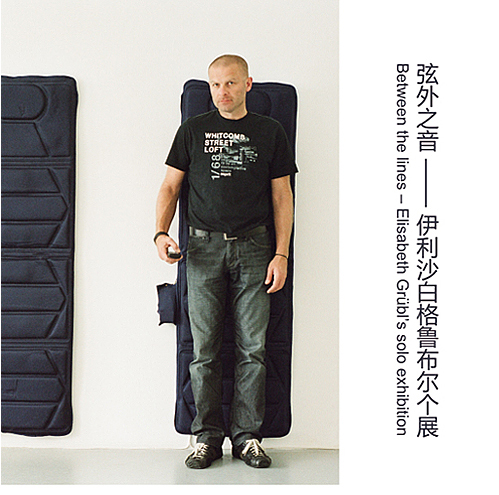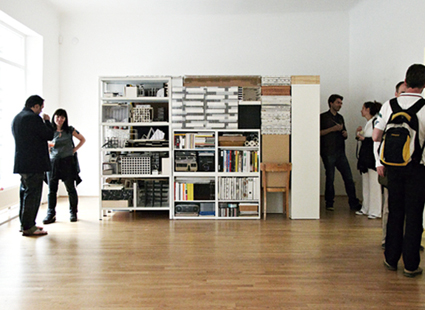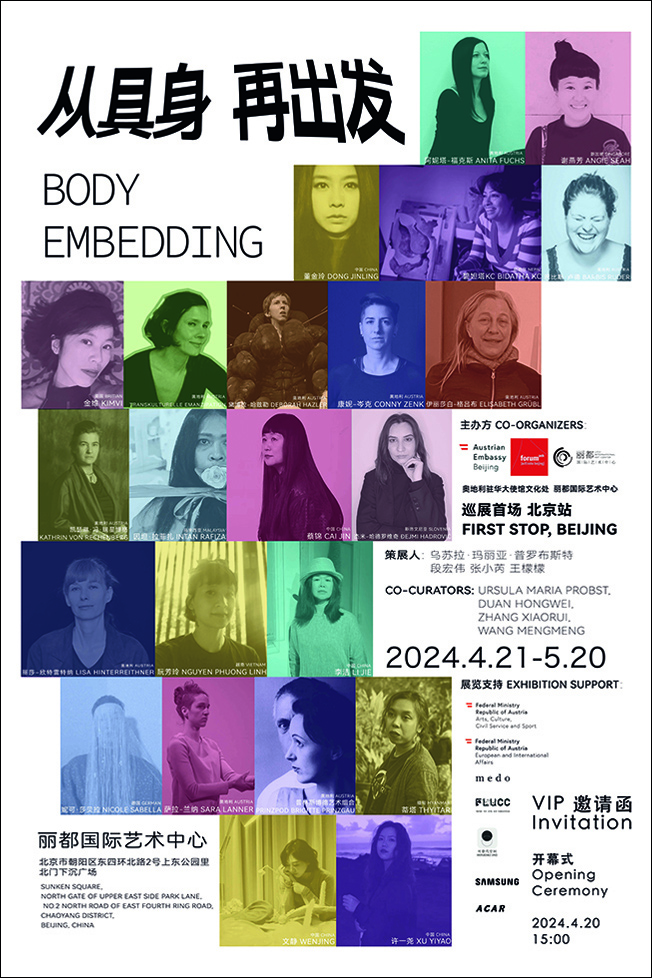

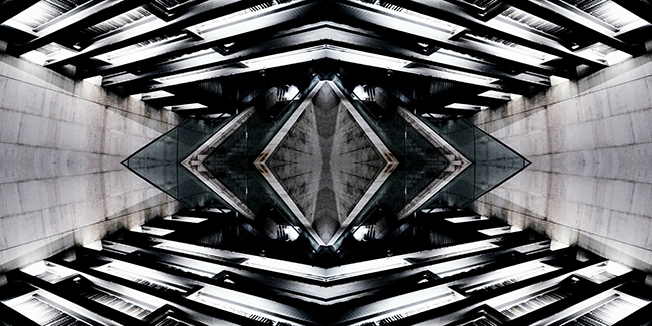


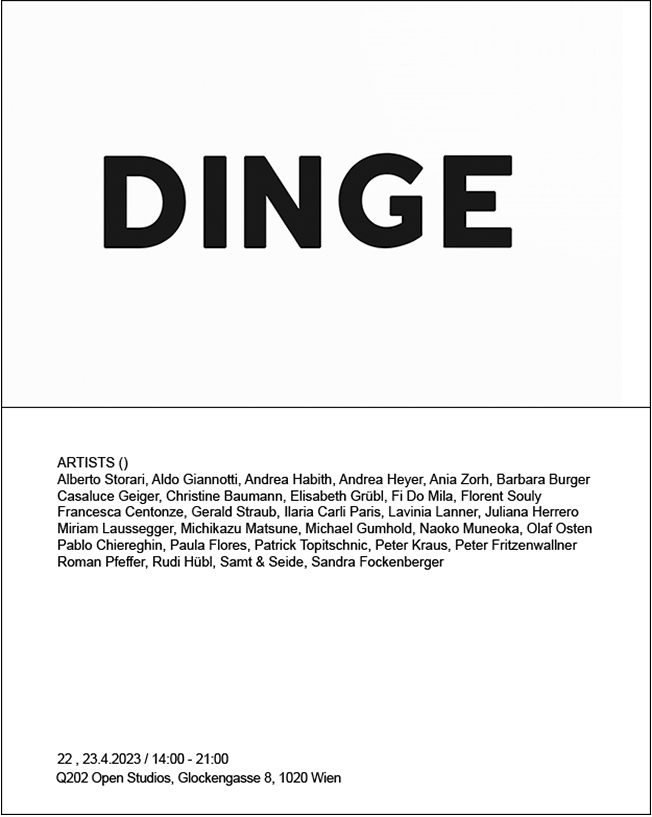
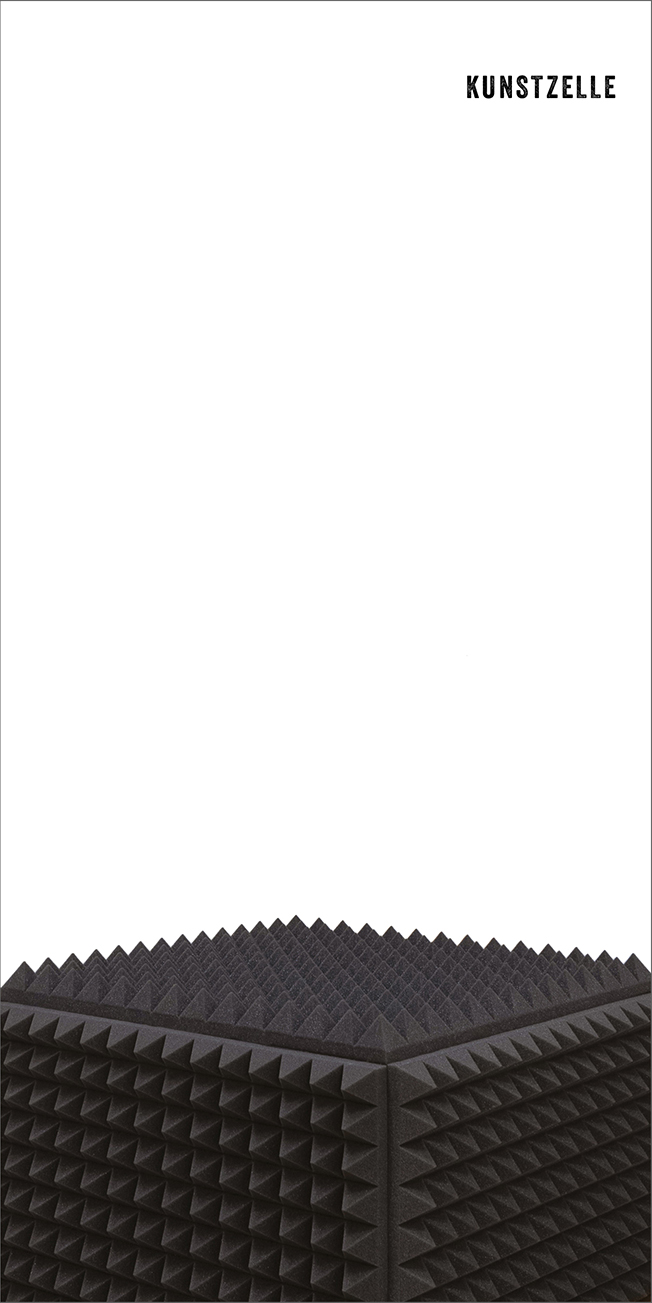






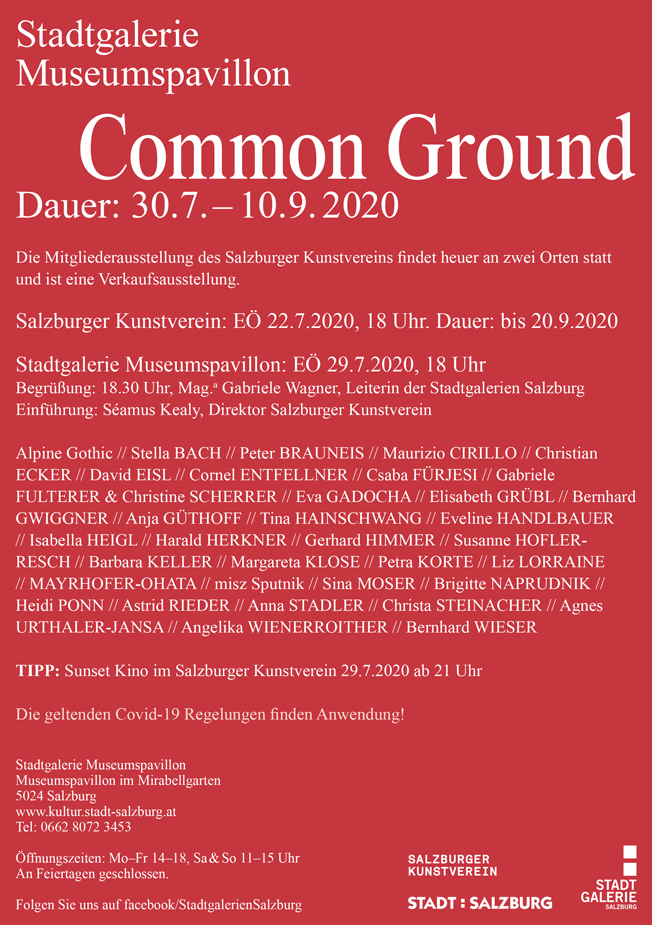


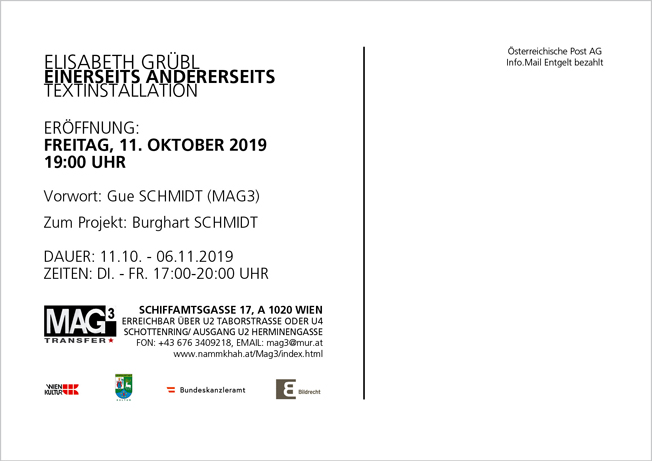
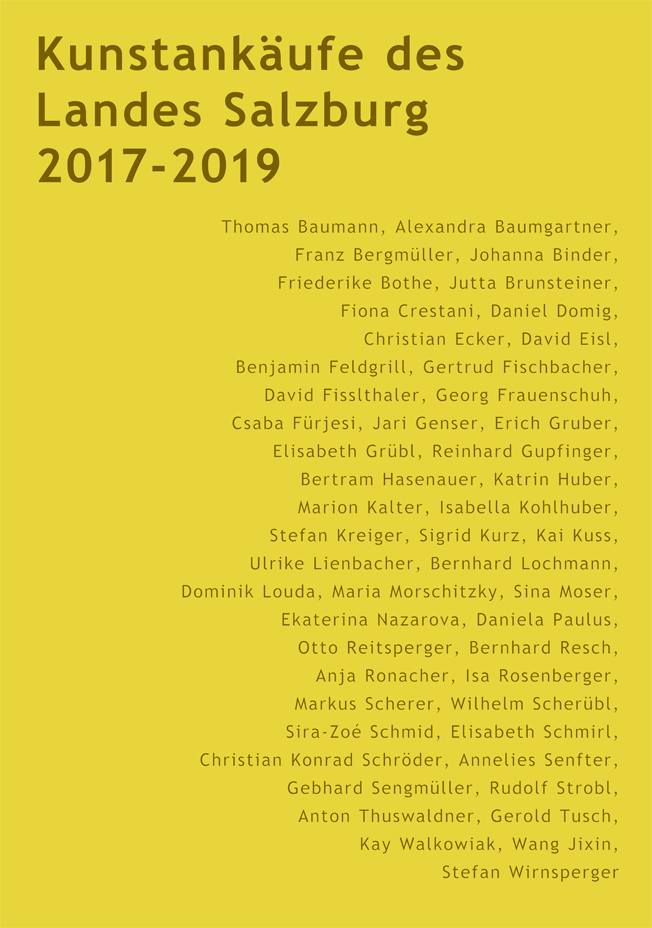


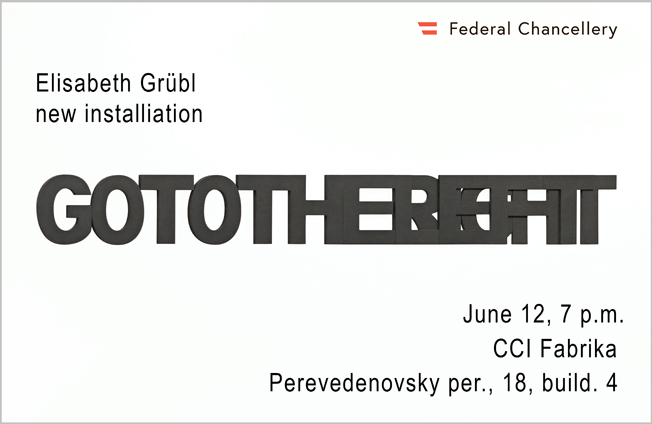
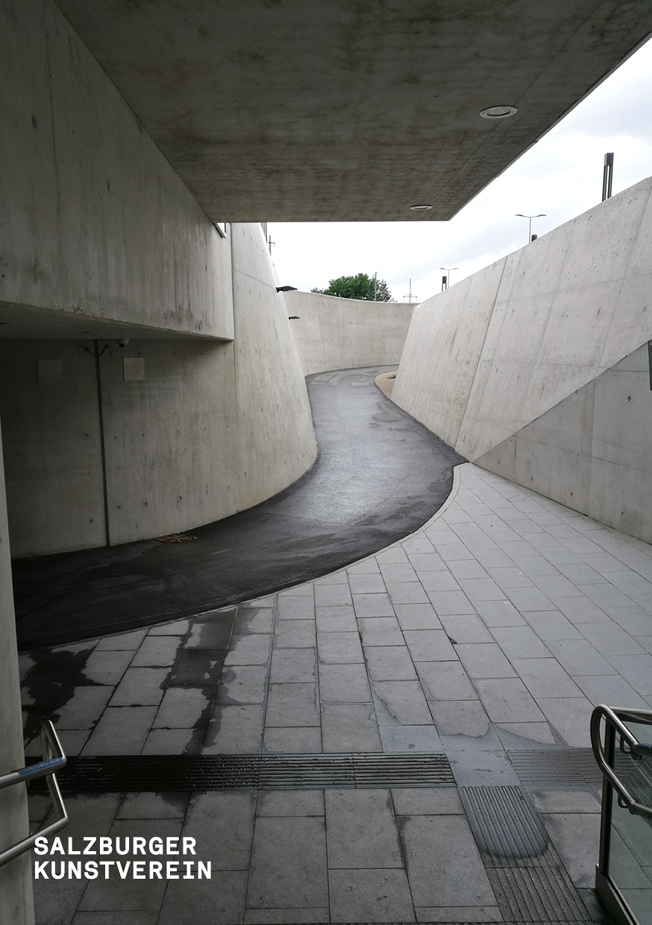
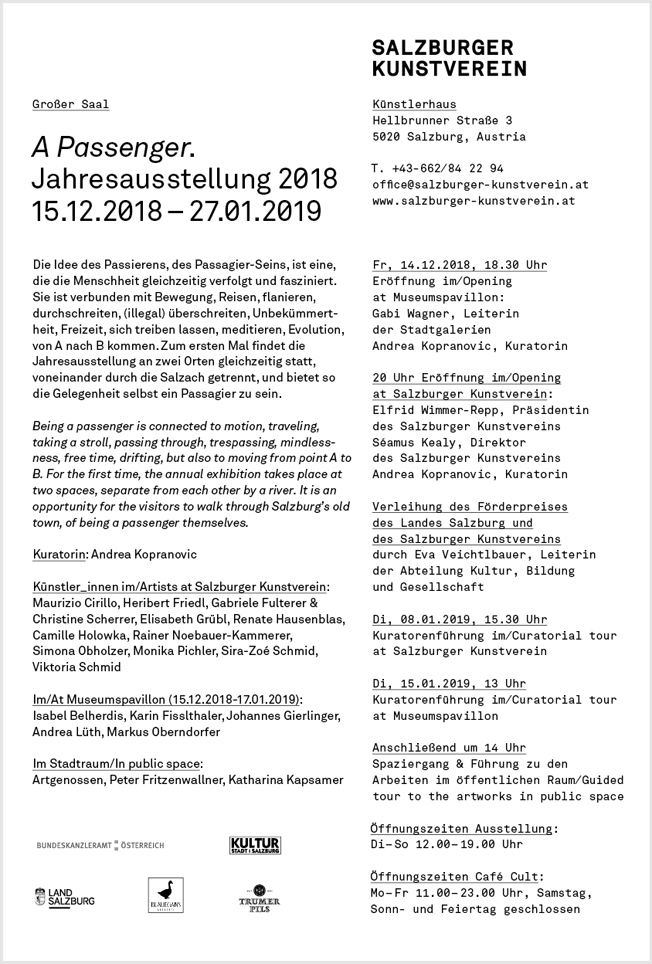
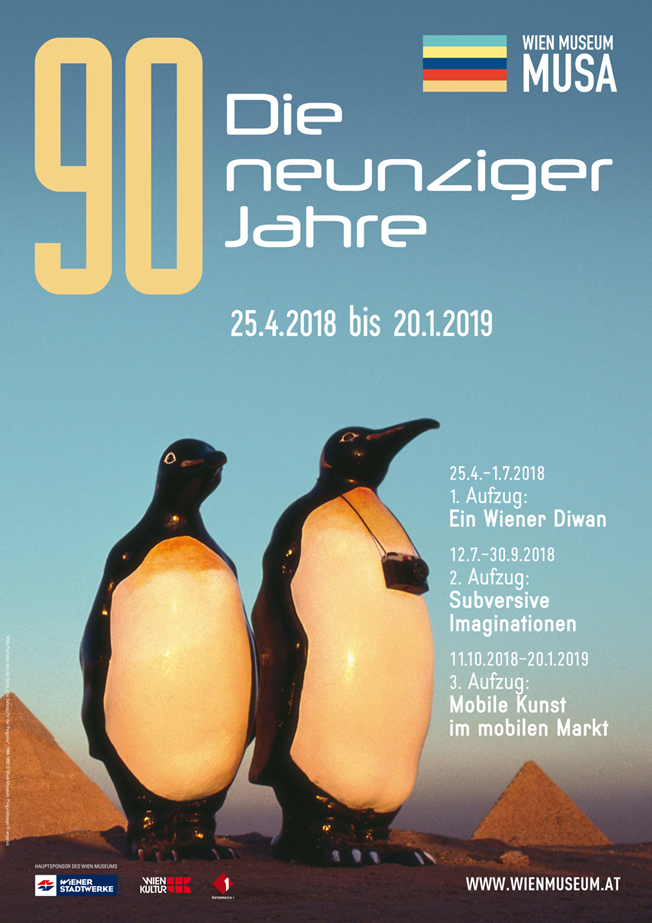

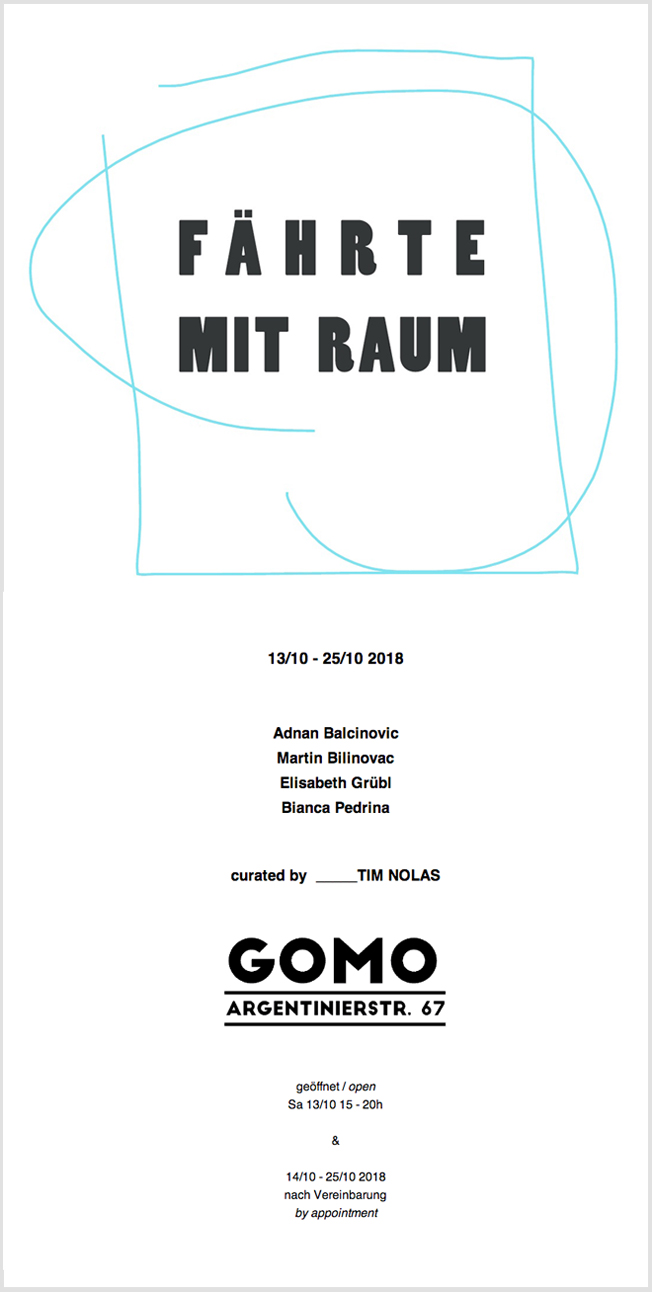
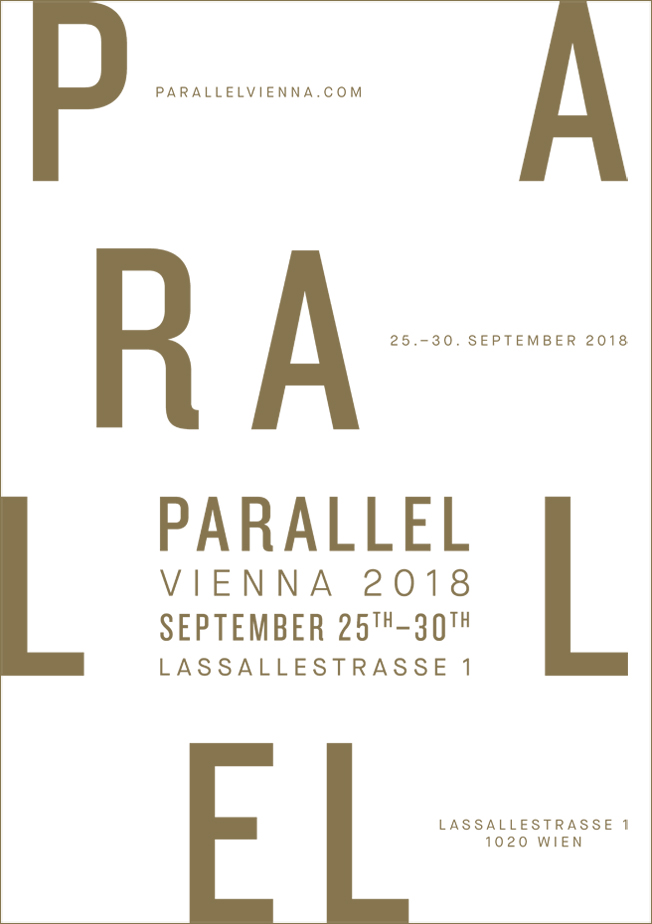

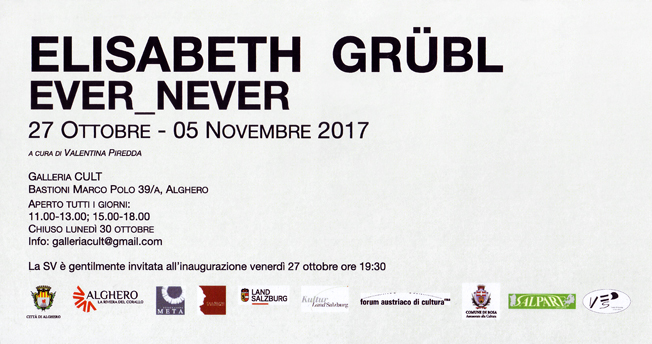



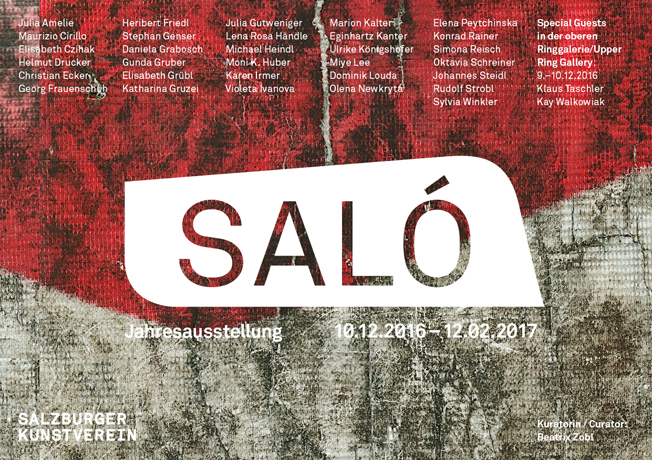
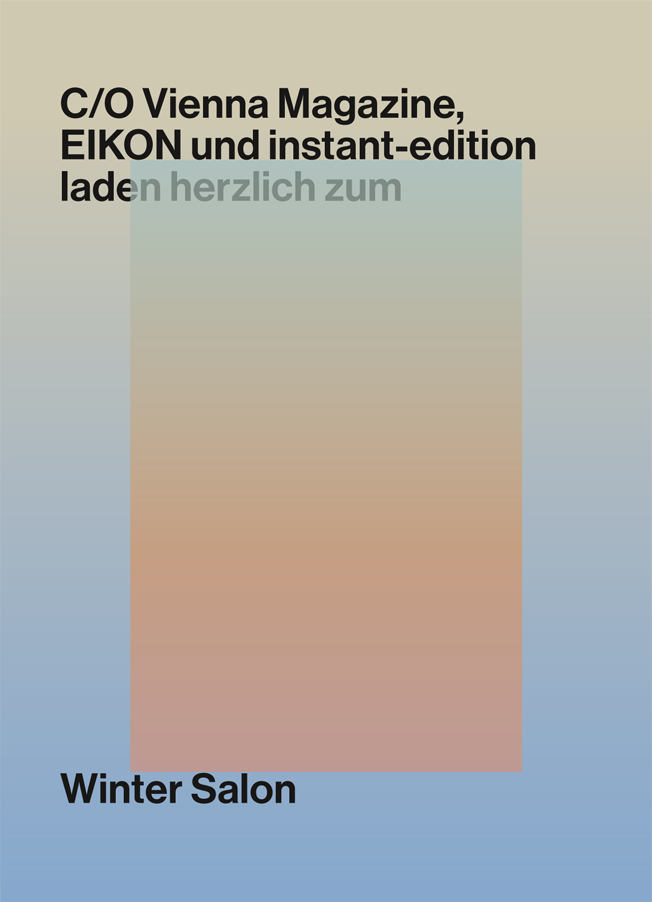
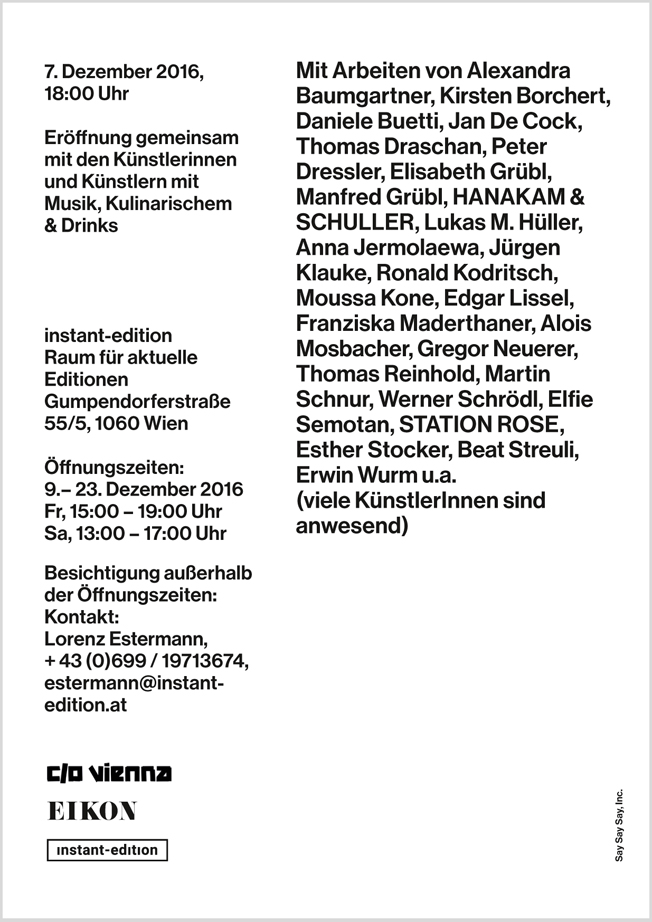
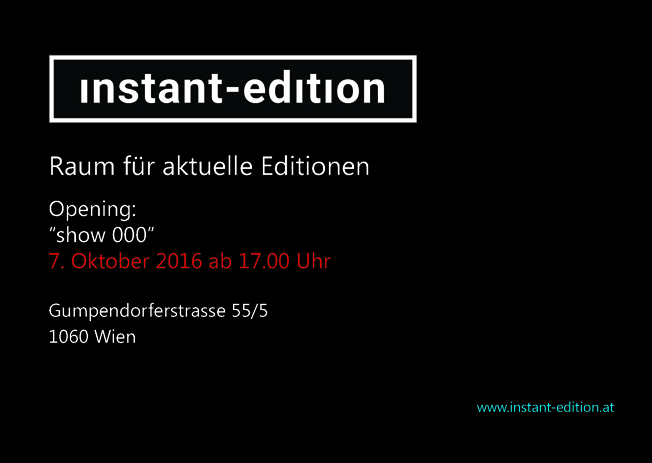
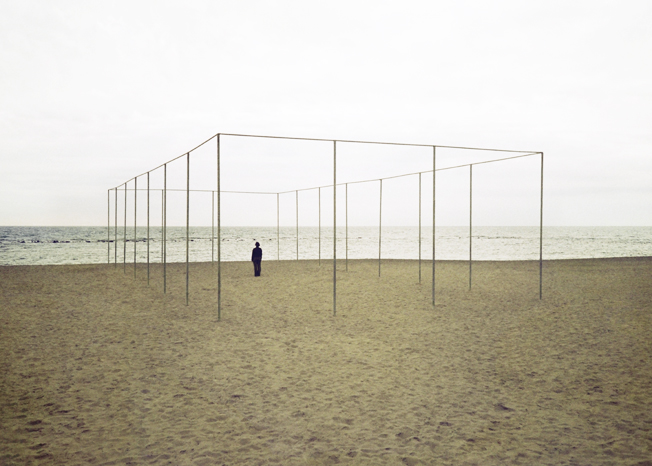

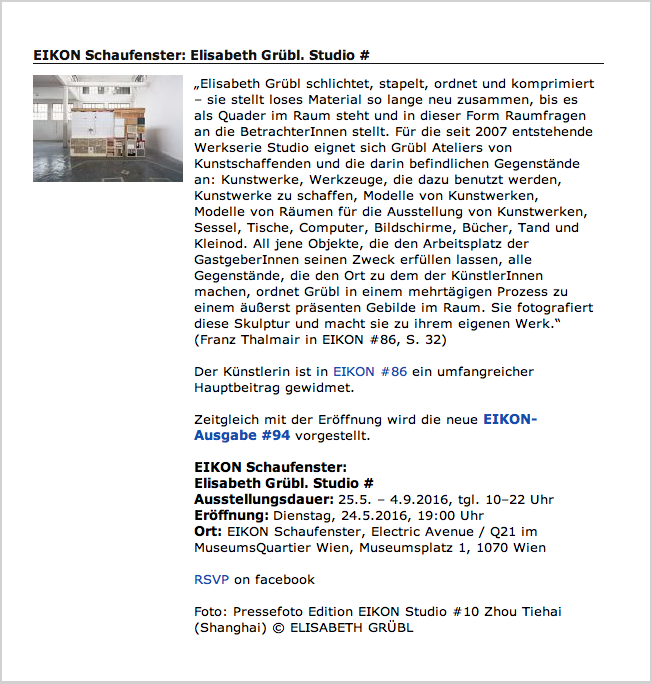
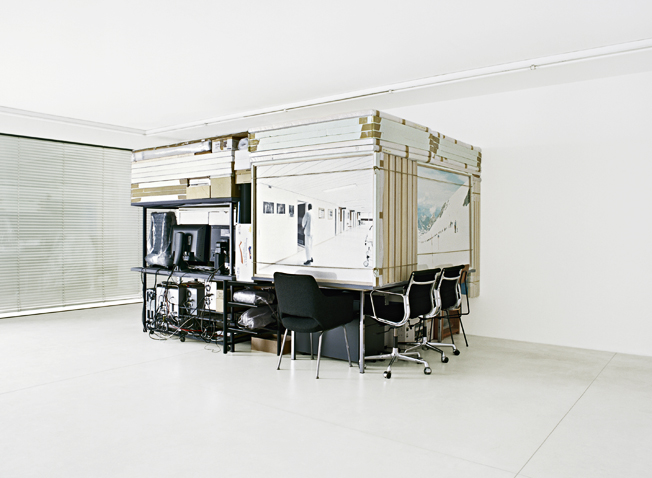
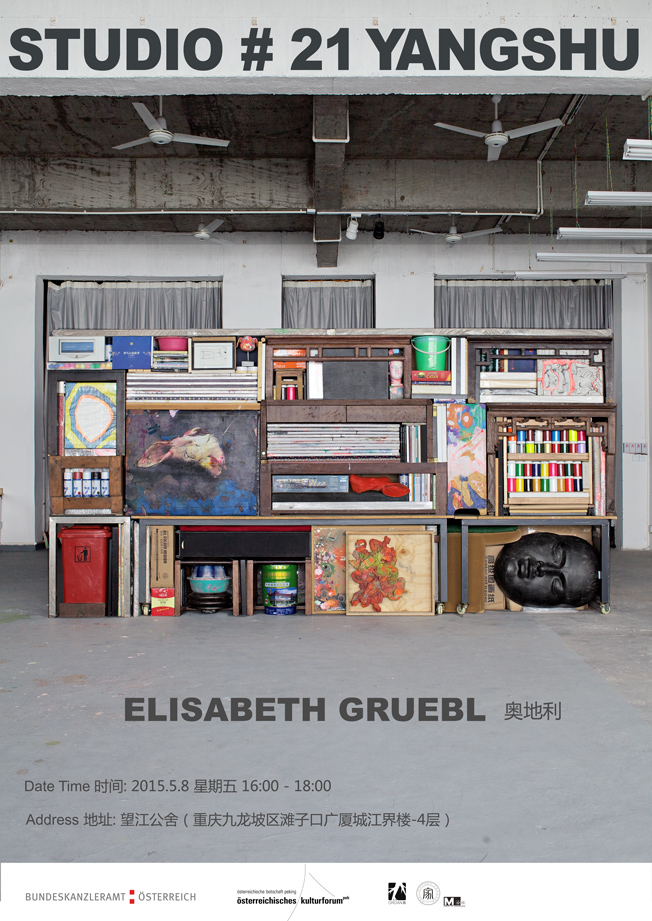

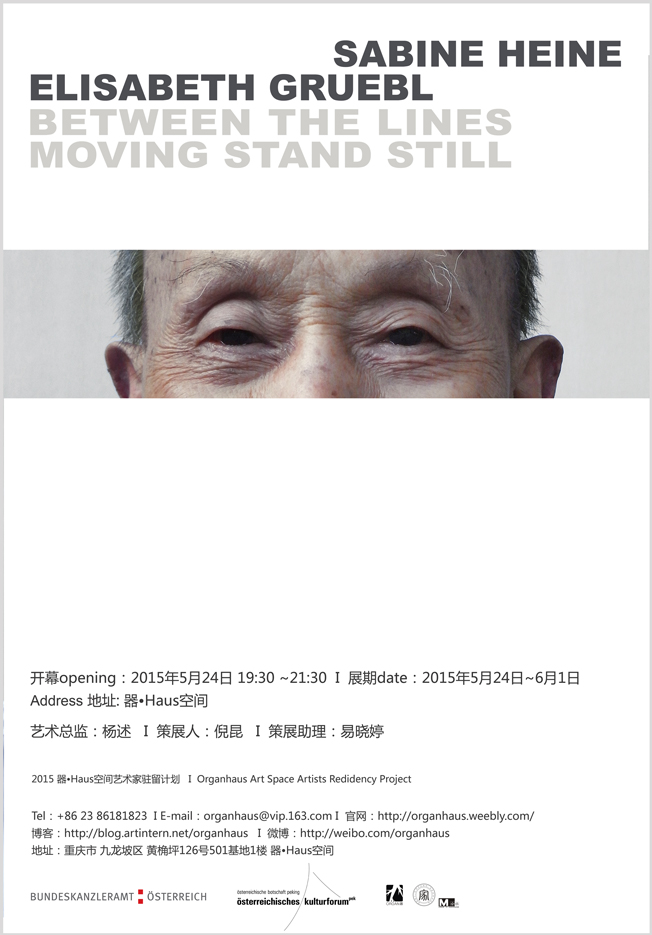
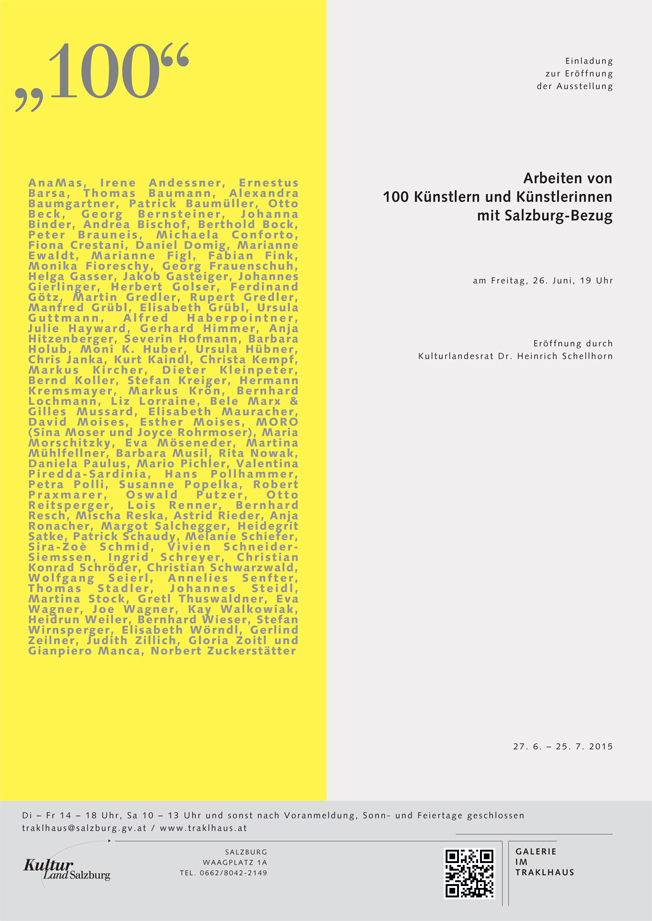

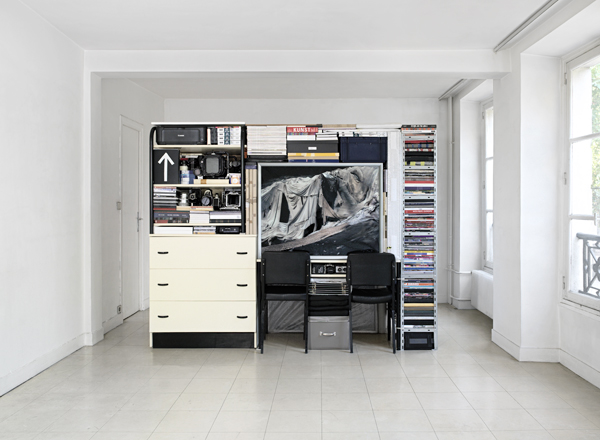
UNFRAMED
Art Without The Frame
a cooperation between Galerie Raum mit Licht and EIKON
Exhibition: 09 –19 September 2014, Tue – Fri 11am – 6pm, Sat 11am – 2pm

UNFRAMED ART WITHOUT THE FRAME
What the frame achieves for the artwork is that it symbolises and bolsters the twofold function of its border — protection from outside and a united merging of the content within. It excludes settings and so also the viewer from the artwork, placing it at the right distance for it to be enjoyed as an aesthetic experience." (Georg Simmel)
Does the frame really create the distance required to experience an artwork aesthetically — i.e. sensually? Or does it not tend to hamper its reception by excluding the viewer and keeping them at a distance? This is the question UNFRAMED would like to discuss. Works are shown that engage with, in the broadest sense, photographic surfaces. Instead, though, of being held at a distance as is usually the case, visitors here literally come into contact with the artworks — by means of a playful approach to their display. UNFRAMED engages with lifting the dichotomy between the artwork on the one side and the viewer on the other. The aim is to bring the artwork to the body, to break open the frame and to overcome the traditionally prescribed distance. The mechanisms of the market are similarly challenged in UNFRAMED: artworks here can be purchased in the "classical" manner (even at affordable prices), while an Art Swap also provides both visitors and artists with an opportunity to renegotiate their values.
Participating artists:
Georg Aerni, Iris Andraschek, Diana Artus, Michael Aschauer, Gottfried Bechtold, Wout Berger, Renate Bertlmann, Nadja Bournonville, Vera Brandner, Georgia Creimer, Christoph Dahlhausen, Katrina Daschner, Inge Dick, Gregor Ecker, Titanilla Eisenhart, Lara Erel, eSeL, Lorenz Esterman, VALIE EXPORT, Jonas Feferle, Karin Fisslthaler, Thomas Florschuetz, Thomas Freiler, G.R.A.M., Elisabeth Grübl, Harald Gsaller, Käthe Hager von Strobele, Caroline Heider, Stephan Hilge, Tamara Horáková + Ewald Maurer, Bernhard Hosa, Edgar Honetschläger, Lukas Maximilian Hüller, Judith Huemer, Alfredo Jaar, Herwig Kempinger, Anastasia Khoroshilova, Ernst Koslitsch, Friedl Kubelka <> Friedl vom Gröller, Hans Kupelwieser, Sigrid Kurz, Paul Kranzler, Paul Albert Leitner, Branko Lenart, Ulrike Lienbacher, Edgar Lissel, Sabine Maier, Leonard Mandl, Anja Manfredi, Michael Mastrototaro, Michael Mauracher, Andreas Müller, Nasya Kopteva & Sasha Braulov, Martin Osterider, Klaus Pamminger, Philipp Pesserl, Roman Pfeffer, Klaus Pichler, Lisl Ponger, Prinzgau/podgorschek, Abigail Reynolds, Ingrid Sandsborg, Lindsay Seers, Elfie Semotan, Nicole Six & Paul Petritsch, Jemima Stehli, Kamen Stoyanov, Michael Strasser, Ingeborg Strobl, Rini Tandon, Klaus Taschler, Josef Wais, Elisabeth Wildling, Robert Zahornicky, Gregor Zivic, Leo Zogmayer u.a
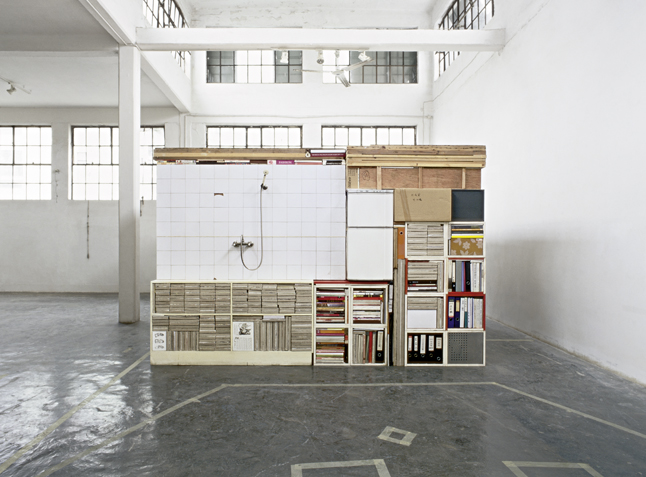
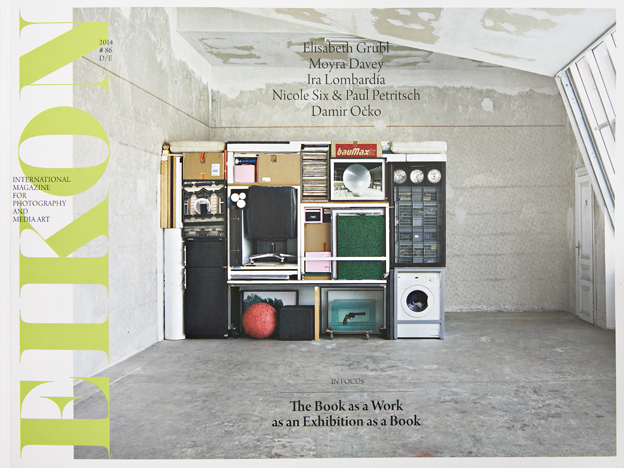
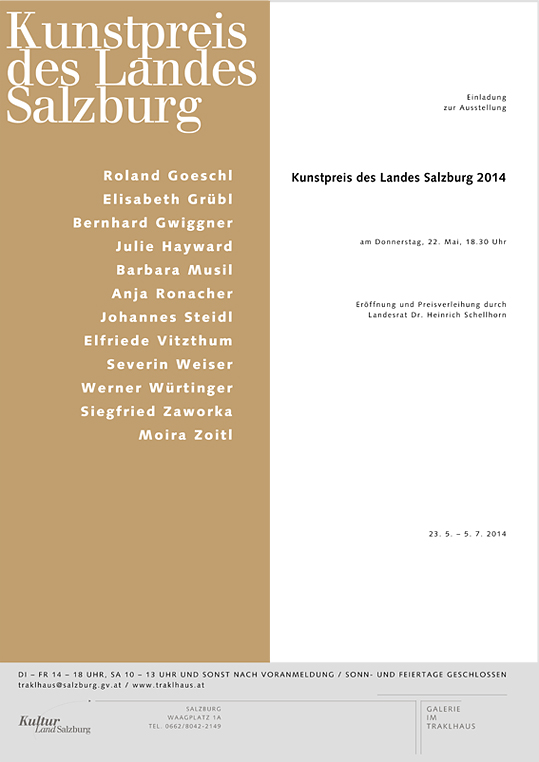


Opening: 3:00-6:00pm, April 12, 2014 (Saturday)
Duration: April 12, 2014 – May 27, 2014
Venue: A Thousand Plateaus Art Space, 3-5 South District, Tiexiang Temple Riverfront, 699 Tianfu First Street, High-tech Development Zone, Chengdu, China



Ningbo Art Museum
Opening 7.11.2013
Exhibition from 7.11.-24.11.2013
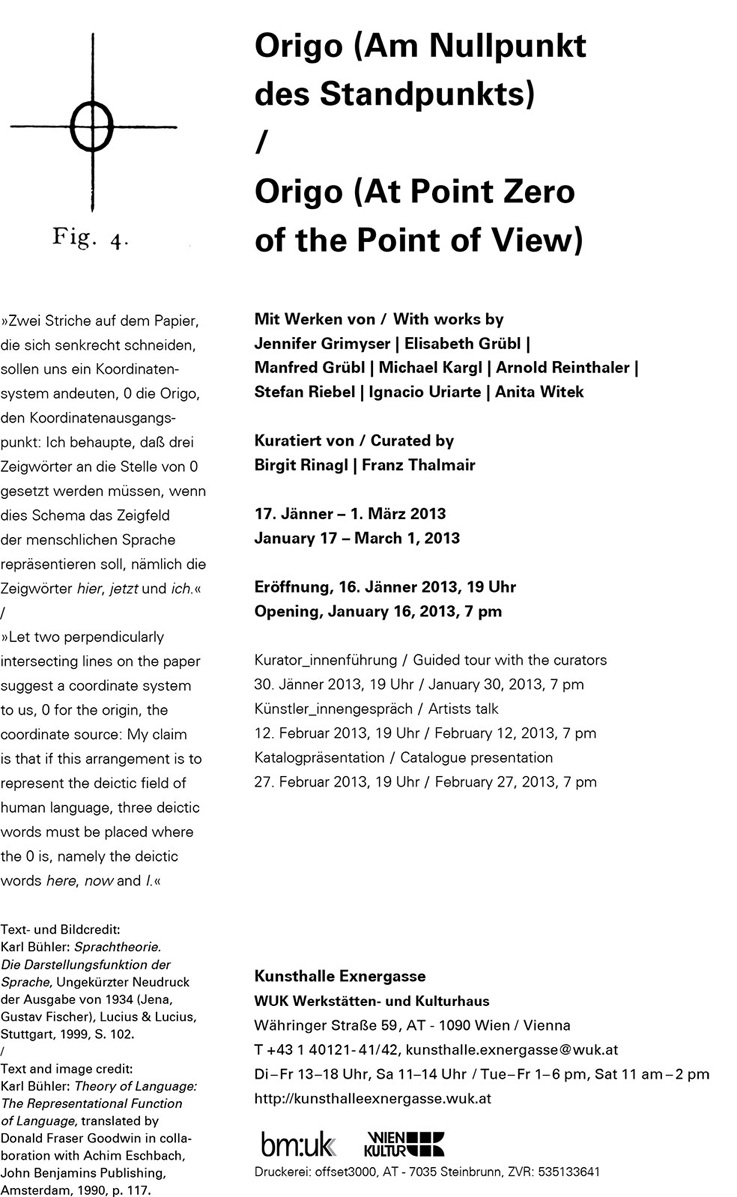

This work is based on artists’ studios. Everything in the room – in other words artworks, materials and furniture – is condensed into the form of a rectangular cube (or, more correctly, cuboid). With everything ultimately stacked into this sculptural form, the entire workspace ends up empty except for this rectangle, and a completely altered spatial situation is the result. In each studio, this process is concluded by taking a single frontal photograph
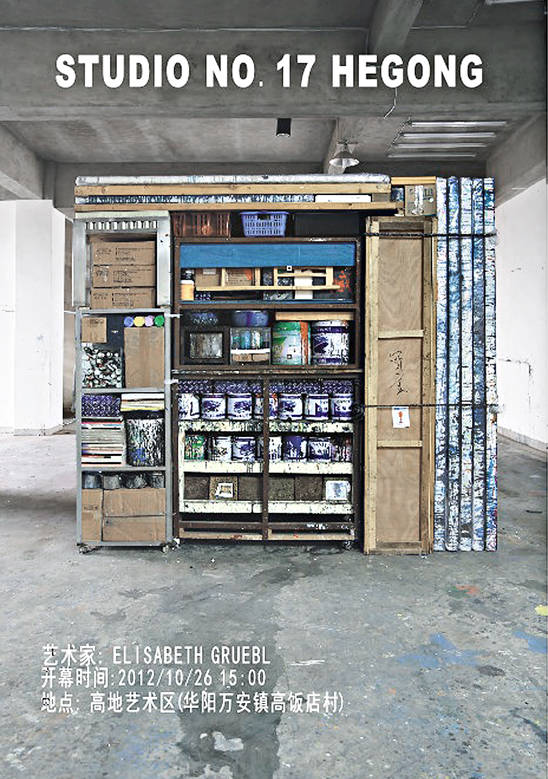


ABOUT
Together with Michal Škoda, Curator: Jiří Ševčík
Opening: 14.december 2010, 6pm
Exhibition runs: 25 Mar 2011 - 19 May 2011
Austrian Culture Forum, Jungmannovo nam 18, Prague
Den festen Rahmen für Michal Škodas Werk bildet die Avantgarde und Neoavantgarde des 20. Jahrhunderts und ihre Reduzierung der Kunst auf grundlegende Formen und Gesetzmäßigkeiten. Dieser modernistische Rahmen ist jedoch eine Referenz, der sich Michal Škoda zwar bedient, die er aber fortwährend überschreitet, erweitert und stört. Sein Interesse gilt dem tieferen Hintergrund der geometrischen Strukturen, der Architektur, der Typographie und jeglichen Formen der Sprache, die der Kommunikation dienen – seien es Texte von Künstlern, Philosophen, oder triviale schematische Darstellungen verschiedener Situationen. Der weiteste Rahmen ist dabei für den Autor die künstliche Umgebung der Architektur, die er – so schreibt er in seiner „Erklärung“ – als visuell-räumliche Struktur wahrnimmt, als eine universelle Kulturlandschaft, die von unserer Sprache scheinbar nur widergespiegelt wird, tatsächlich aber von ihr mit erschaffen und uns verständlich gemacht wird.
Elisabeth Grübl verwendet in ihren Skulpturen, Klanginstallationen, Filmvorführungen und Interventionen in den Raum Mittel, die die Erkundung unserer Wahrnehmungsgrenzen ermöglichen. Sie bewegt sich an der Grenze und bringt uns dazu, an der Transformation und Modulation des Raumes von Klang, Licht und Bewegung beteiligt zu sein. Ihre Interventionen in den Raum sind oft minimalisiert und stellen hohe Anforderungen an die Aufmerksamkeit des Betrachters, ermöglichen aber schließlich eine außergewöhnliche ästhetische Erfahrung. Dabei vermessen und beleben wir die Fähigkeiten unserer eigenen Sensoren, die mit unserer physischen Sinnlichkeit verbunden sind. Wesentlich ist jedoch, dass wir dabei vor allem die Art und Weise erproben, auf die wir generell die Realität unserer Umwelt wahrnehmen und konstruieren. Wie bereits die Kunstkritik bemerkte, konfrontiert uns Elisabeth Grübl mit einer Situation, in der wir nicht nur ihre audiovisuelle Installation wahrnehmen, sondern uns auch unserer eigenen Wahrnehmung bewusst werden.
Text: Jiří Ševčík (Auszug)

opening: 14.december 2010, 6pm
exhibition runs: 15 Dec 2010 - 14 Jan 2011
galéria SPACE, Velehradská 7/A, Bratislava
Elisabeth and Manfred Grübl work independently, but also realise projects together. When working together, their collaboration does not result in a fixed and static situation, but arises temporarily from their interest in a shared content. Their works encompass in and outdoor installations, video, laser and sound projects, computer animations, interactive installations, some of which include the participation of IRL people, as well as conceptual and context related art and photography. In this exhibition, these interests merge. Taken together, the works in the installation suggest a thematic of inclusion / exclusion. They challenge the perception of their audience through a subtle, implicit play of the border (or relation) between the concept of an 'inside' and an 'outside.' Whether it is a line gradually moving across three monitors or massage mats hanging on a wall, or an object with the words inside_ outside overlapping, or a pedestal with headphones, which offers visitors the possibility of listening to electronic sounds, the works suggest a certain questioning of borders and a dynamic sense of movement.The border between participating or not with the massage mats, between silence or sound - between using the headphones and listening or not, are options left to the audience. On a conceptual level, the line slowly moving across the three monitors juxtaposes, but leaves the relation between infinity and finality unresolved. Similarly, the videotapes scattered next to the three toy cranes might contain information or not. Yet, we will never know, as the artists do not provide any access to their possible content.The installation remains deliberately open-ended. It leaves the audience ample room to question their relation to the presented works and any implied meaning(s). And, perception is dynamically unsettled.
by Maia Damianovic

